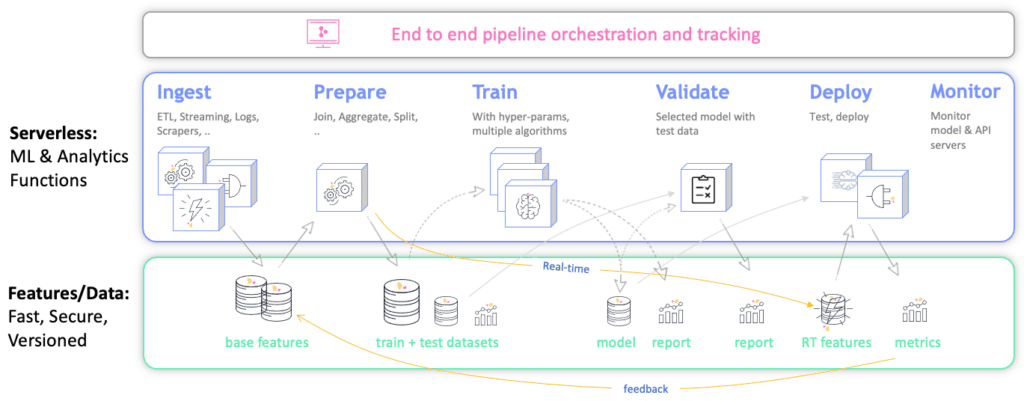
ML Platforms: Assembly Required
This practical guide dives into how to approach your MLOps tool stack
Thank you for downloading this whitepaper
The PDF has been sent to your email. If you have questions feel free to reach out to info@iguazio.com

The process of building a successful machine learning model is long and complex. There are many tasks that need to be completed in order to reach success, and they are generally time-consuming and labor-intensive.
A machine learning pipeline helps to streamline and speed up the process by automating these workflows and linking them together.
Most ML pipelines include these tasks:

ML models can help organizations to spot opportunities and risks, improve their business strategy, and deliver better customer experience. But gathering and processing data for ML models, using it to train and test the models, and finally operationalizing machine learning, can take a long time.
Companies want their data science teams to speed up the process so they can deliver valuable business predictions faster.
That’s where ML pipelines come in. By automating workflows with machine learning pipeline monitoring, ML pipelines bring you to operationalizing machine learning models sooner.
As well as cutting down on the time it takes to produce a new ML model, machine learning pipeline orchestration also helps you improve the quality of your machine learning models. We call it a pipeline, but actual pipelines are one-way and one-time only, which isn’t the case for ML pipelines.
ML pipelines are iterative cycles that repeat every step multiple times.
Through the principles of CI/CD, ML pipelines increase the accuracy of ML models and raise the quality of your algorithms.
Data scientists in every vertical use automated ML pipelines to improve their ML models and speed up development and operationalization.
Companies of all sizes are waking up to the benefits that ML models can bring them across every department. Marketing, sales, product, and customer service teams are among the departments that want to apply ML to their data, but only large enterprises can afford to field a data science team that’s large enough to respond to every request.
A CI/CD pipeline for machine learning helps a small data science team punch above its weight.
Pipelines democratize access to ML models so that even small companies can apply machine learning to make better data-driven business decisions.
A data science pipeline brings value to a number of use cases:
Free up time for your data science team
It’s rare to find a company that has a data science team big enough to respond to everyone’s request for ML predictions for their use cases. ML pipelines take over many of their most time-consuming jobs so that they can focus on vital tasks that can’t be automated.
Improve data-driven decision making in every department
Machine learning predictions can add value and improve decision making in every area of your business, but it takes too long for your data science team to build a model for every request. ML pipelines help overcome silos and enable every team to draw on AI predictions for better data-driven decision-making.
Optimize business strategies
CI/CD pipeline machine learning helps you build more accurate ML models for your business management team to use to identify opportunities, mitigate risks, and track demand, so that your strategy keeps you ahead of the competition.
Enhance customer experience
With machine learning orchestration you can develop ML models faster and apply them to more use cases, allowing you to predict consumer trends instead of reacting to them and understand customer preferences on a granular level, so you can offer an improved customer experience and boost your bottom line.

